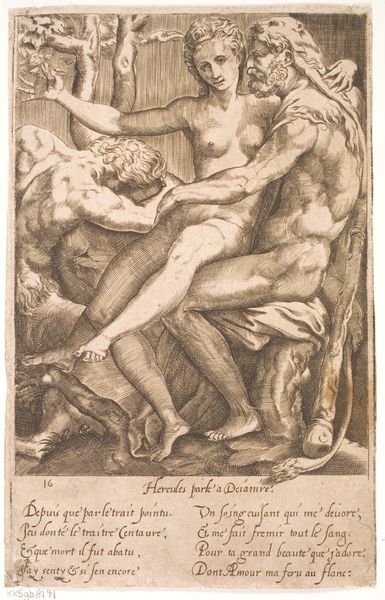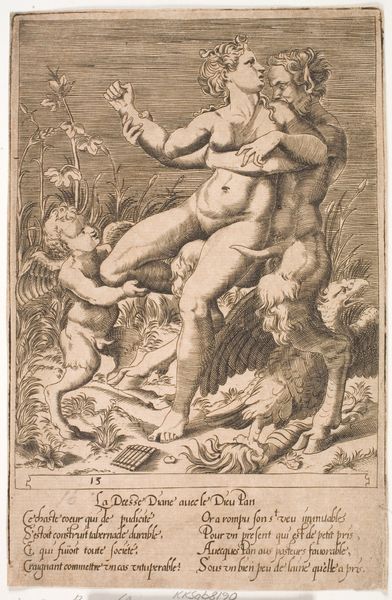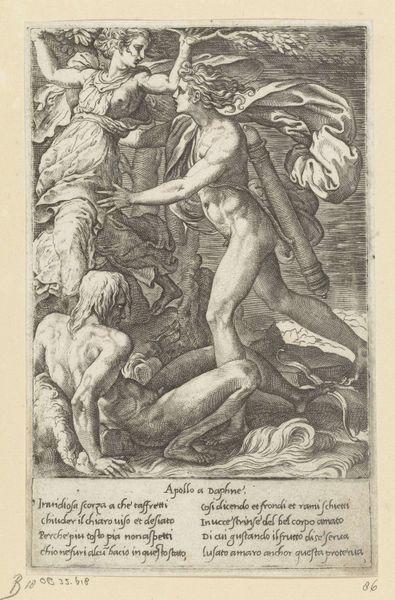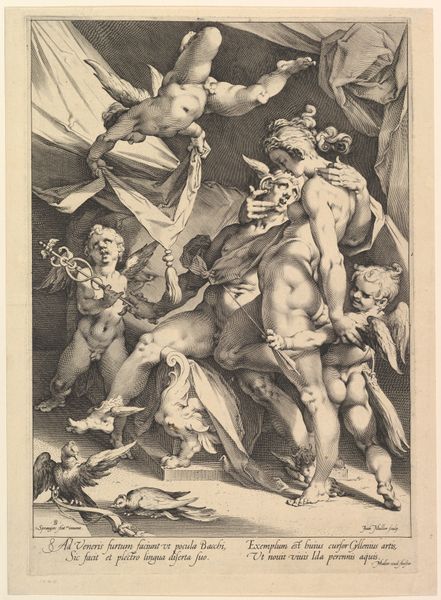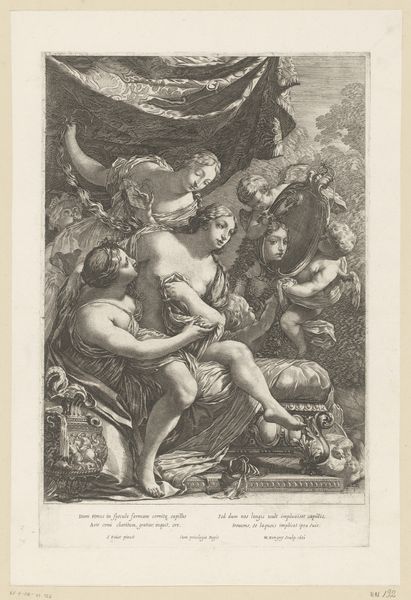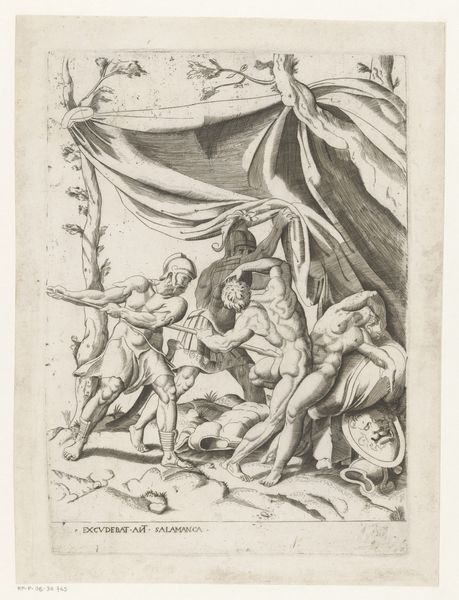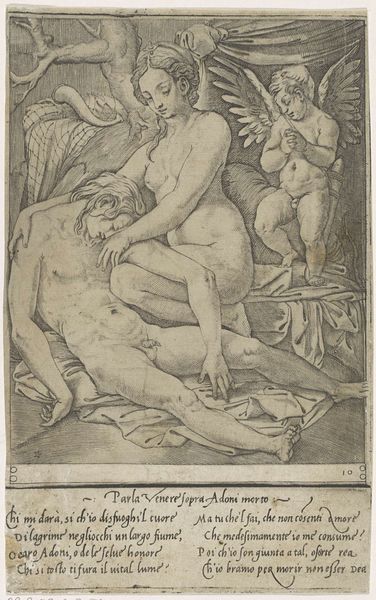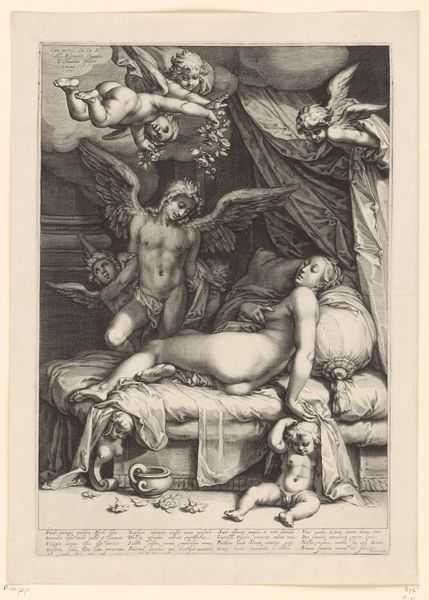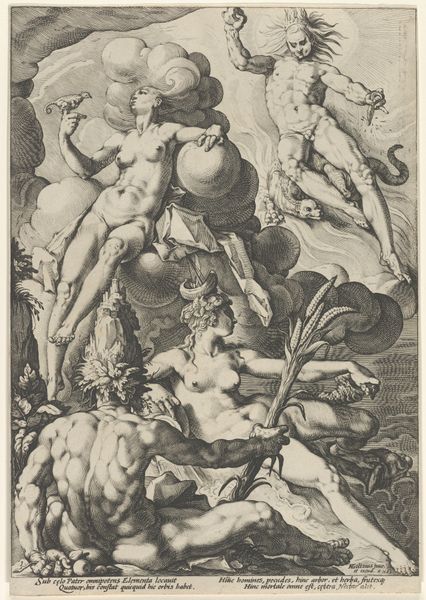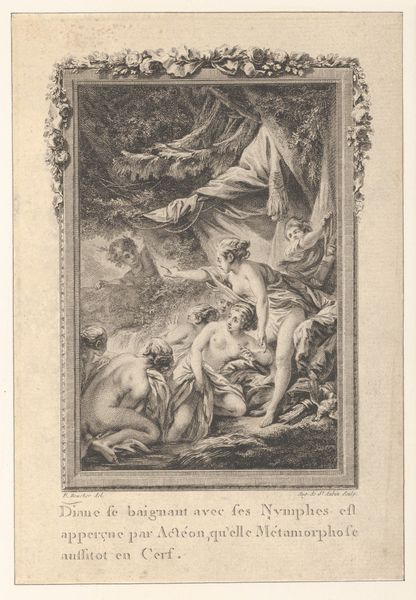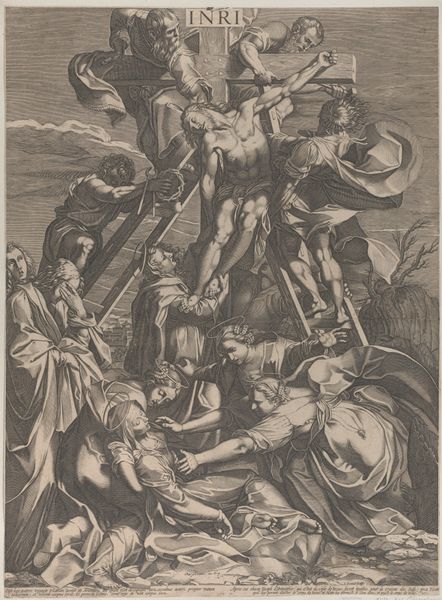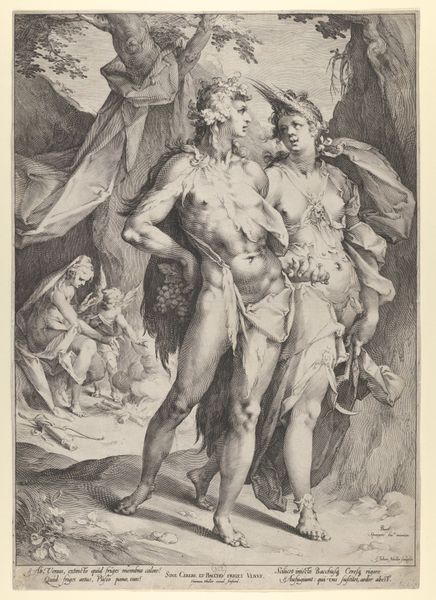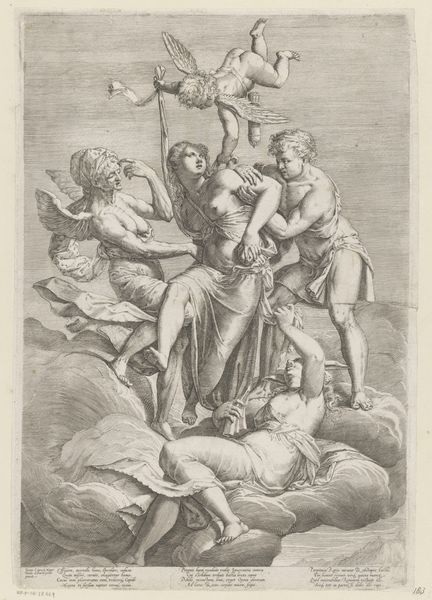
print, etching, engraving
#
allegory
# print
#
etching
#
mannerism
#
figuration
#
history-painting
#
engraving
Dimensions: 215 mm (height) x 140 mm (width) (plademaal)
Editor: This print, "Den brændende Jupiter," or "Jupiter in Flames", made sometime between 1540 and 1585 by Jacques Androuet, uses etching and engraving. It’s packed with figures, and honestly, it's a bit chaotic to look at! What do you see in this piece? Curator: It's a great example of Mannerist art, which played with established artistic conventions and often aimed to startle. What's particularly interesting here is how it reflects the socio-political function of imagery at the time. Prints like this, depicting classical narratives, weren't just decorative. They served as a visual language, understood by the educated elite, to convey power and cultural legitimacy. Editor: So, by depicting Jupiter, it's not *just* mythology? Curator: Exactly! It's about claiming a connection to classical authority and displaying a learned understanding of these stories. And consider the *burning* aspect. How might ideas about divine judgment and the volatile nature of power be coming across? The choice to represent that destruction can imply certain commentary or justification. It poses questions about how authority figures choose to showcase their power. Does it feel celebratory or cautionary? Editor: It's definitely not what I expected. So, instead of a straightforward depiction, it becomes a commentary on authority. Seeing this print is like observing propaganda being developed and seeing people wrestle with politics and cultural messages that we now have access to analyze. Curator: Absolutely. It reminds us that even seemingly straightforward mythological scenes were steeped in the politics of imagery. These were often designed to be more impactful than pretty. Editor: That's fascinating. I’ll definitely view prints differently from now on.
Comments
No comments
Be the first to comment and join the conversation on the ultimate creative platform.
